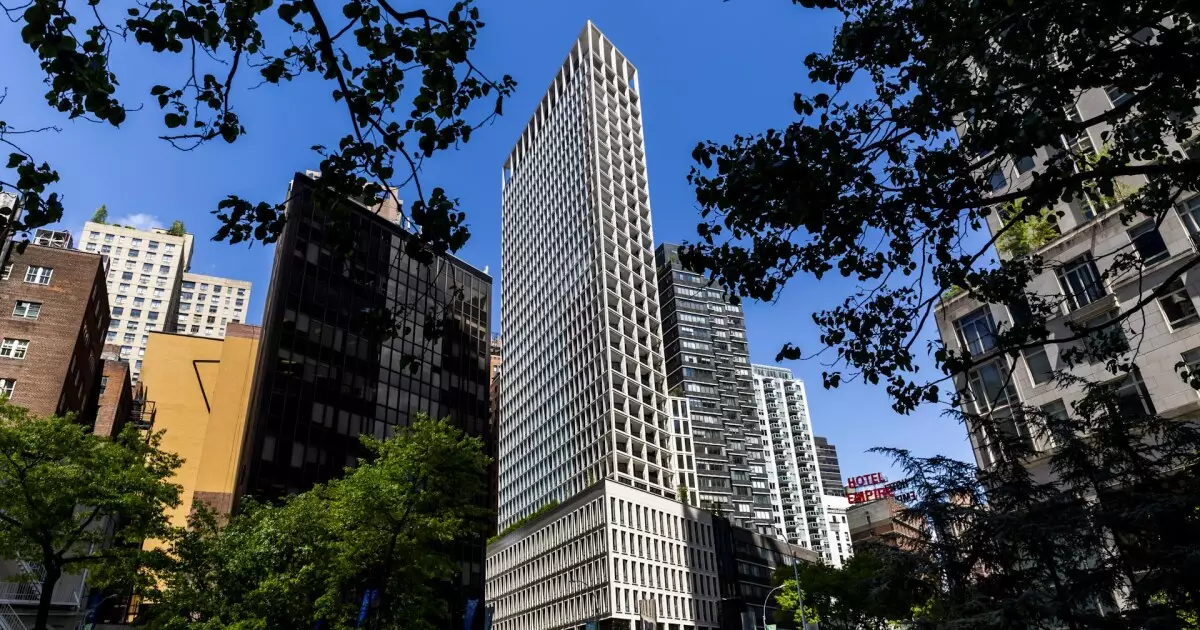The New York Metropolitan Transportation Authority (MTA) is set to embark on a new financial strategy, introducing bonds backed by its real estate transfer tax, often referred to as the “mansion tax.” This move marks a significant shift in how the MTA funds its capital projects, allowing access to funds in a volatile revenue environment, and it reaffirms the agency‘s commitment to its capital plan, despite uncertainties in the financial landscape.
A Closer Look at the Mansion Tax
The mansion tax applies to high-value real estate transactions exceeding $2 million in New York City. This tax has generated noteworthy revenue since its inception in 2019, but the unpredictability of the New York City real estate market presents a substantial risk for bondholders. Historically, the mansion tax has produced varying collections, ranging from a low of $186 million in 2020 to a peak of $536 million in 2022. This variance underscores the sensitivities that high-value transactions have to broader economic fluctuations.
Investors will have an opportunity this week to buy into $1.3 billion of these bonds, which evolve from the Triborough Bridge and Tunnel Authority (TBTA). This offering will cover maturity dates stretching from 2025 to 2059, reflecting a long-term outlook aimed at mitigating risks associated with market volatility.
Ratings agencies have assigned a mixed bag of grades to these bonds, with Moody’s rendering an A1 score, S&P awarding an A-plus, and Kroll providing an AA rating. These evaluations reveal a cautious optimism but suggest that the mansion tax bonds may not hold the same esteem as other debt instruments backed by the MTA, such as sales tax or payroll mobility tax bonds, which have received higher ratings from S&P. This lower rating may reflect skepticism regarding the stability of revenues derived from real estate transactions.
Marcia Tannian, the MTA’s Director of Finance and Investor Relations, communicated the agency’s strategy regarding these bonds, emphasizing a cap on annual debt service of $150 million. This ceiling implies that the MTA envisions a maximum issue of $2.5 billion from this revenue stream, permitting the agency to manage risk effectively while avoiding excessive reliance on tax revenues that can fluctuate dramatically.
The anticipated revenue generated from the mansion tax represents a critical piece of the funding puzzle for the MTA’s capital plan, which is designed to enhance infrastructure and improve services. However, the broader implications of relying on volatile revenue streams have raised concerns among financial analysts, as observed by Moody’s Baye Larsen. A volatile revenue source can complicate financial planning, particularly when economic cycles dip and potential shortfalls arise.
In addition, the agency’s establishment of a debt service reserve fund, ensured to meet maximum annual debt service requirements, serves as a safety net. Tannian described this strategy as uncommon for MTA and TBTA credit, further emphasizing the MTA’s forward-looking approach to manage potential downturns in revenue collections.
The Bigger Picture: Contextualizing the MTA’s Financial Landscape
The MTA has historically utilized various taxes, including the payroll mobility tax, to secure bonds for capital projects. Lockbox funds, which exclusively support capital expenditure, have been central to the MTA’s financing strategy. Importantly, the mansion tax represents a further diversification of the agency’s approach to securing funding, as it provides an alternative revenue stream amidst a backdrop of operational budget challenges and significant financial deficits projected for future capital plans.
This new issuance is also occurring at a crucial time, with significant pressures on the MTA’s budget attributed to declining ridership and funding gaps in its operational budget. Although the MTA anticipates issuing an additional $1.2 billion of mansion tax-backed bonds in the near future, this ongoing reliance on real estate transfer taxes underscores the need for a robust and resilient financial strategy in an unpredictable economic environment.
Concluding Thoughts: Navigating Future Funding Challenges
Overall, the introduction of bonds backed by the mansion tax represents a critical moment for the MTA as it seeks to innovate its financing methods while addressing inherent risks related to revenue volatility. By establishing safeguards like the debt service cap and reserve funds, the agency signals a precautionary strategy aimed at maintaining investor confidence and ensuring stable funding for essential capital projects. As the MTA moves forward, it will be crucial to monitor the efficacy of this approach amid economic fluctuations and the changing dynamics of New York City’s real estate market. This evolution in financing may serve as a case study for other urban transit authorities looking to navigate complex fiscal landscapes.

